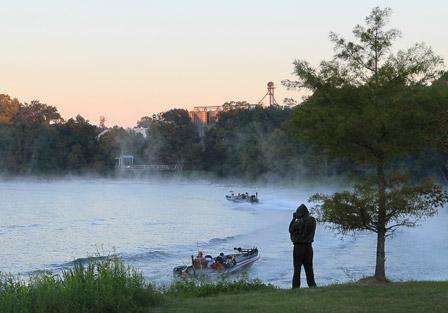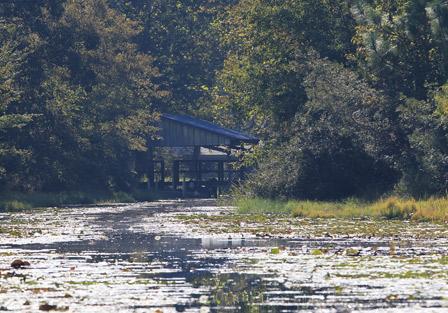
Editor’s Note: This is the first in a series profiling 2014 Elite Series locations.
The Bassmaster Elite Series pros will be “grinning from ear to ear” when they kick off the season at Lake Seminole March 13-16 believes Florida’s Shaw Grigsby. Grigsby knows this storied 37,500-acre reservoir well, having won two of the 13 Bassmaster events that have happened here.
“The whole lake will be good in March,” Grigsby says. “And very few patterns won’t work, so the pros will be able to play to whatever their strengths are.”
Located in Georgia’s southwest corner along the Florida border, Seminole’s bass spawn peaks in February, Grigsby points out. There will be spawning activity during the tournament, but many of the bass will be on a postspawn feeding spree.
You might think that Grigsby, who excels at bed fishing, will concentrate on spawning bass. That could happen, but Grigsby isn’t locked into sight fishing.
“I finished third at Seminole once and caught every bass on a lipless crankbait,” Grigsby says. “And, it was full spawn time. Seminole is a great cranking lake.”
Key areas on the main lake will be sand bars and high spots that have stumps and submerged hydrilla. A jerkbait or lipless rattler could score big here.
Schools of bass will also be relating to main lake creek channel drops, Grigsby adds.
“I look for structure guys like Timmy Horton and Paul Elias to be extremely competitive,” Grigsby says. “Mike Iaconelli wiped us out at Seminole once by fishing one of those drops.”
Grigsby also believes that everything from drop shot fishing to punching hyacinth mats with heavy Texas rigs could be productive. Could the shad spawn be a factor?
 A major tournament was won here up the Chattahoochee River in late March 2012. The winning angler was fishing what he described as clumps of “peanut grass” and “gator grass” in 4 feet of water.
A major tournament was won here up the Chattahoochee River in late March 2012. The winning angler was fishing what he described as clumps of “peanut grass” and “gator grass” in 4 feet of water.
Shad were spawning on the grass in the morning, and the angler picked them off with a white 4×4 swim jig dressed with a white craw and a Spro Dean Rojas Bronzeye Poppin’ Frog.
Seminole’s Flint River arm offers another option – shoal bass. They don’t get as heavy as Seminole’s largemouth, but 4- and 5-pound shoal bass are not uncommon. Early spring tournaments have been won at Seminole with shoal bass.
The Elite Series tournament takes off from Bainbridge, Ga., on the Flint River. Most of the pros will jet south to the main lake and beyond. Any pros that head north for shoal bass will have little competition.
“I filmed a TV show a few years ago up the Flint River,” Grigsby says. “It’s beautiful up there, and the fishing is good. You have to be careful, though. There are plenty of rocky shoals that could take out a lower unit.”
Few spotted bass swim in Seminole, so they won’t be a factor, explains John Kilpatrick, a biologist with the Wildlife Resources Division of Georgia’s Department of Natural Resources.
Southern Georgia lies in the southern range of the northern largemouth and the northern range of the Florida largemouth. Kilpatrick refers to this as an “intergrade region.”
The result of this overlap is that Seminole has naturally occurring hybrid largemouth bass. According to Kilpatrick, the bass are plump and ready for the picking.
“The bass have done quite well over the past decade,” Kilpatrick says. “They’re in good condition, and tournament weights have been increasing.”
As for aquatic vegetation, Kilpatrick says that Seminole, “has everything, and I mean everything.”
Hydrilla is the predominant vegetation, and it sometimes covers 70 to 80 percent of the Spring Creek arm. Spring Creek is one of the backwater areas that offers prime largemouth spawning habitat.
Given Seminole’s bass habitat, the season and the many fishing patterns that should produce during the Elite tournament, 20-pound limits will be common, believes Grigsby.
“It should take 36 to 38 pounds to make the top 50 cut and it wouldn’t surprise me if it takes over 40 pounds,” Grigsby says. “The winning stringer may top the century mark.”

